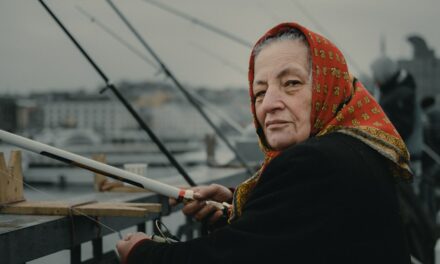The early life of an artist often serves as a foundation for their creative journey, shaping their perspectives and informing their work. Born in a modest household in the heart of a bustling city, the artist’s formative years were marked by a rich tapestry of cultural experiences. Surrounded by the vibrant energy of urban life, they were exposed to a myriad of artistic expressions from an early age.
Their parents, both avid art enthusiasts, encouraged exploration and creativity, often taking them to galleries and museums. This early exposure ignited a passion for art that would only deepen with time. Education played a pivotal role in the artist’s development.
After completing secondary school, they enrolled in a prestigious art institution, where they honed their skills and expanded their knowledge of various artistic techniques. The curriculum was rigorous, encompassing everything from classical drawing to modern digital art. It was during this period that the artist began to experiment with different mediums, discovering a particular affinity for painting and sculpture.
The influence of dedicated mentors and the camaraderie of fellow students fostered an environment ripe for artistic growth, allowing them to cultivate their unique voice.
Summary
- Banksy’s early life and education remain shrouded in mystery, adding to the enigma surrounding the artist.
- His artistic influences and style draw from street art, graffiti, and political activism, creating a unique and impactful visual language.
- Key artworks such as “Girl with a Balloon” and “Dismaland” have garnered international attention and critical acclaim, while his exhibitions often challenge traditional art spaces.
- Banksy’s exploration of themes such as politics, consumerism, and social justice has sparked important conversations and resonated with audiences worldwide.
- The artist’s use of materials and techniques, including stencils and spray paint, reflects his subversive approach to art-making and public intervention.
Artistic Influences and Style
As the artist matured, their style began to crystallise, drawing inspiration from a diverse array of influences. The works of the Old Masters, particularly those of Rembrandt and Vermeer, left an indelible mark on their approach to light and shadow. The artist admired how these painters captured the human experience with such emotional depth and technical precision.
Additionally, the bold colours and dynamic compositions of the Impressionists resonated deeply, encouraging them to embrace spontaneity in their own work. In contrast to these historical influences, contemporary artists also played a significant role in shaping the artist’s style. The vibrant street art movement, with its emphasis on social commentary and urban aesthetics, inspired them to incorporate elements of graffiti into their paintings.
This fusion of traditional techniques with modern sensibilities resulted in a distinctive style that is both evocative and accessible. The artist’s work often features a rich palette and intricate layering, inviting viewers to engage with the complexities of each piece.
Key Artworks and Exhibitions
Throughout their career, the artist has produced a remarkable body of work that has garnered attention from critics and collectors alike. One of their most celebrated pieces, “Reflections of Time,” showcases a masterful interplay of light and colour, capturing the essence of fleeting moments. This artwork not only exemplifies their technical prowess but also serves as a poignant commentary on the passage of time and its impact on human experience.
Exhibitions have played a crucial role in elevating the artist’s profile within the art world. Their first solo exhibition at a renowned gallery was met with critical acclaim, drawing in crowds eager to witness the evolution of their artistic vision. Subsequent exhibitions have continued to push boundaries, often exploring themes of identity and belonging.
The artist’s ability to connect with audiences through their work has solidified their reputation as a leading figure in contemporary art.
Exploration of Themes and Subjects
The thematic exploration within the artist’s oeuvre is both profound and multifaceted. Central to their work is an examination of identity—how it is shaped by personal experiences, cultural heritage, and societal expectations. This exploration often manifests through portraiture, where subjects are depicted not merely as individuals but as representatives of broader narratives.
Each piece invites viewers to reflect on their own identities and the complexities that accompany them. Another recurring theme is the relationship between nature and humanity. The artist frequently draws inspiration from the natural world, using it as a backdrop to explore human emotions and interactions.
Landscapes are imbued with symbolism, reflecting the fragility of existence and our connection to the environment. This thematic duality—between the personal and the universal—creates a rich dialogue within their work, encouraging viewers to engage on multiple levels.
Use of Materials and Techniques
The artist’s choice of materials is integral to their creative process, reflecting a commitment to experimentation and innovation. They often blend traditional mediums such as oil paint with unconventional materials like found objects or textiles, creating textured surfaces that invite tactile engagement. This approach not only enhances the visual impact of their work but also imbues it with layers of meaning.
Techniques employed by the artist are equally diverse, ranging from meticulous brushwork to spontaneous mark-making. The juxtaposition of precision and chaos mirrors the complexities of life itself, allowing for an emotional resonance that captivates viewers. Additionally, the artist frequently incorporates mixed media elements into their pieces, further blurring the lines between painting, sculpture, and installation art.
This willingness to push boundaries has become a hallmark of their practice.
Recognition and Achievements
The artist’s contributions to the art world have not gone unnoticed; they have received numerous accolades throughout their career. Prestigious awards have recognised their innovative approach and commitment to artistic excellence, solidifying their status as a leading figure in contemporary art. These accolades serve not only as validation of their talent but also as encouragement to continue exploring new avenues within their practice.
In addition to awards, the artist has been featured in prominent publications and art journals, further amplifying their voice within the discourse surrounding contemporary art. Interviews and articles have provided insight into their creative process, allowing audiences to connect more deeply with their work. This recognition has opened doors for collaborations with other artists and institutions, fostering a sense of community within the art world.
Impact on the Art World
The artist’s influence extends beyond their individual works; they have made significant contributions to the broader art community through mentorship and advocacy. By engaging with emerging artists, they have fostered an environment of collaboration and support, encouraging new voices to emerge within the field. This commitment to nurturing talent reflects a deep understanding of the importance of community in the arts.
Moreover, the artist’s exploration of social issues through their work has sparked important conversations within the art world. By addressing themes such as identity, environmentalism, and cultural heritage, they have challenged audiences to confront uncomfortable truths while inspiring change. Their ability to weave these themes into compelling narratives has positioned them as a thought leader in contemporary art.
Personal Life and Relationships
While much of the artist’s public persona revolves around their work, their personal life has also played a significant role in shaping their artistic vision. Relationships with family and friends have provided both inspiration and support throughout their journey. The artist often draws upon personal experiences when creating new works, infusing them with emotional depth that resonates with viewers.
Additionally, romantic relationships have influenced the artist’s exploration of love and connection within their work. Themes of intimacy and vulnerability are prevalent in many pieces, reflecting both joy and heartache. This willingness to share personal narratives invites audiences into an intimate dialogue, fostering empathy and understanding through shared human experiences.
Legacy and Influence on Contemporary Artists
As an established figure in contemporary art, the artist’s legacy is already beginning to take shape. Their innovative approach has inspired countless emerging artists who seek to challenge conventions and explore new territories within their own practices. Workshops and lectures led by the artist have provided invaluable insights into creative processes, encouraging others to embrace experimentation in their work.
Furthermore, the artist’s commitment to social issues has set a precedent for future generations of artists who wish to use their platforms for advocacy. By demonstrating that art can be a powerful tool for change, they have paved the way for others to follow suit. This legacy will undoubtedly continue to influence the trajectory of contemporary art for years to come.
Critique and Controversies
No artist’s journey is without its share of critique and controversy; this individual is no exception. While many celebrate their innovative approach, some critics argue that certain works lack depth or coherence. These critiques often stem from differing interpretations of complex themes or stylistic choices that challenge traditional norms.
However, rather than deterred by criticism, the artist has embraced it as an opportunity for growth. Controversies surrounding specific artworks have also emerged over time, particularly when addressing sensitive social issues. While some viewers appreciate the boldness with which these topics are tackled, others may find them polarising or uncomfortable.
The artist’s willingness to engage with difficult subjects speaks to their commitment to authenticity in their work; they believe that art should provoke thought and dialogue rather than simply please.
Continuing Relevance and Future Projects
As the artist continues to evolve, they remain acutely aware of the changing landscape of contemporary art. Their ongoing relevance is underscored by a commitment to exploring new themes and techniques while remaining true to their core values. Future projects are already in development, promising exciting new directions that will undoubtedly captivate audiences.
In addition to individual projects, collaborations with other artists are on the horizon—an endeavour that reflects a desire for collective creativity in an increasingly fragmented world. By fostering connections across disciplines and cultures, the artist aims to create works that resonate on both personal and universal levels. As they look towards the future, it is clear that this artist will continue to leave an indelible mark on the art world for years to come.
For those interested in exploring different artistic techniques, a fascinating article to check out is “Wheel Throwing: Mastering the Pottery Wheel”. This article delves into the intricate process of creating pottery using a pottery wheel, providing insights into the skills and techniques required to master this art form. Just like Pauline Auzou’s detailed approach to her artwork, this article offers a comprehensive guide to mastering the pottery wheel and creating beautiful ceramic pieces.


